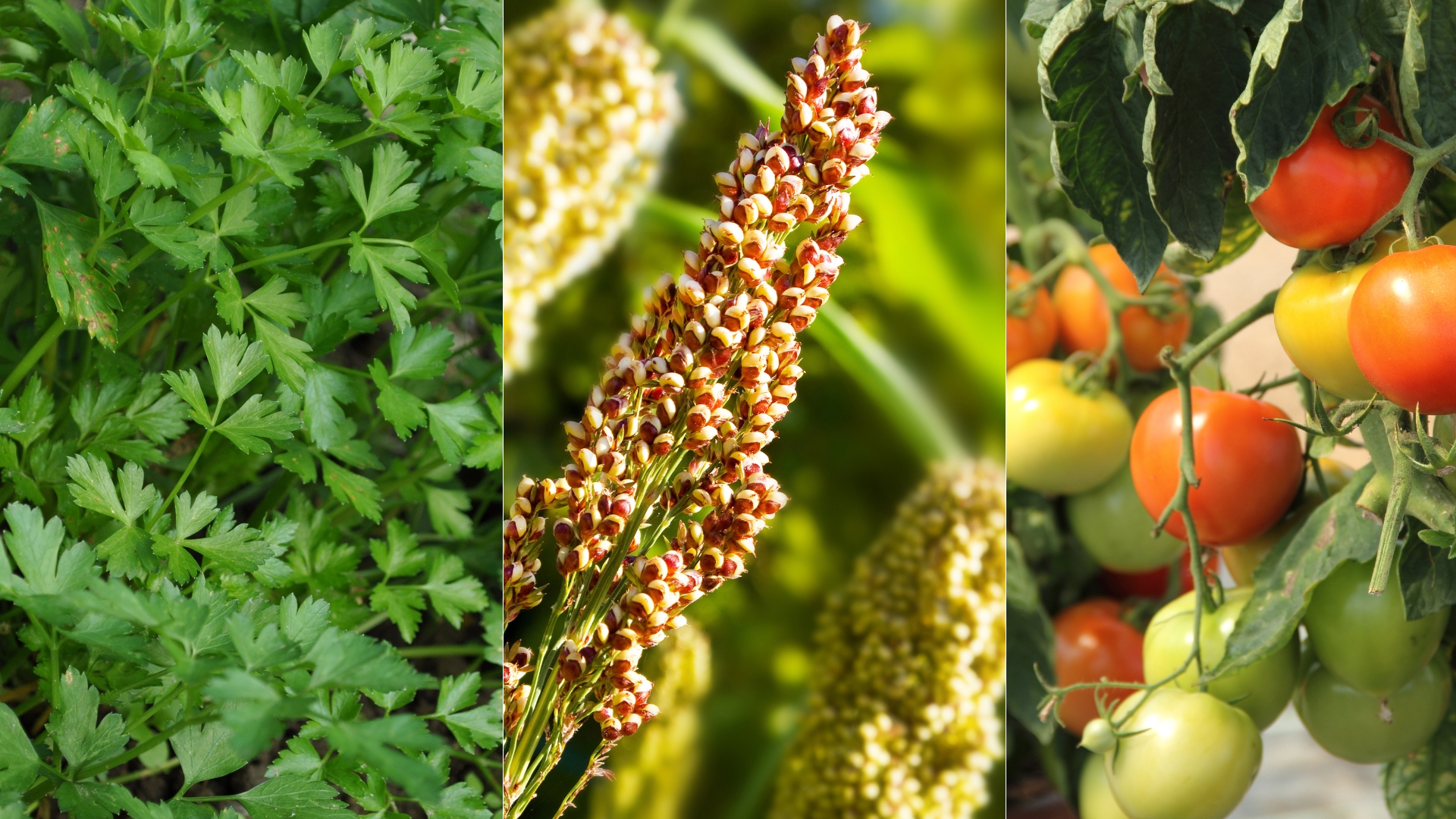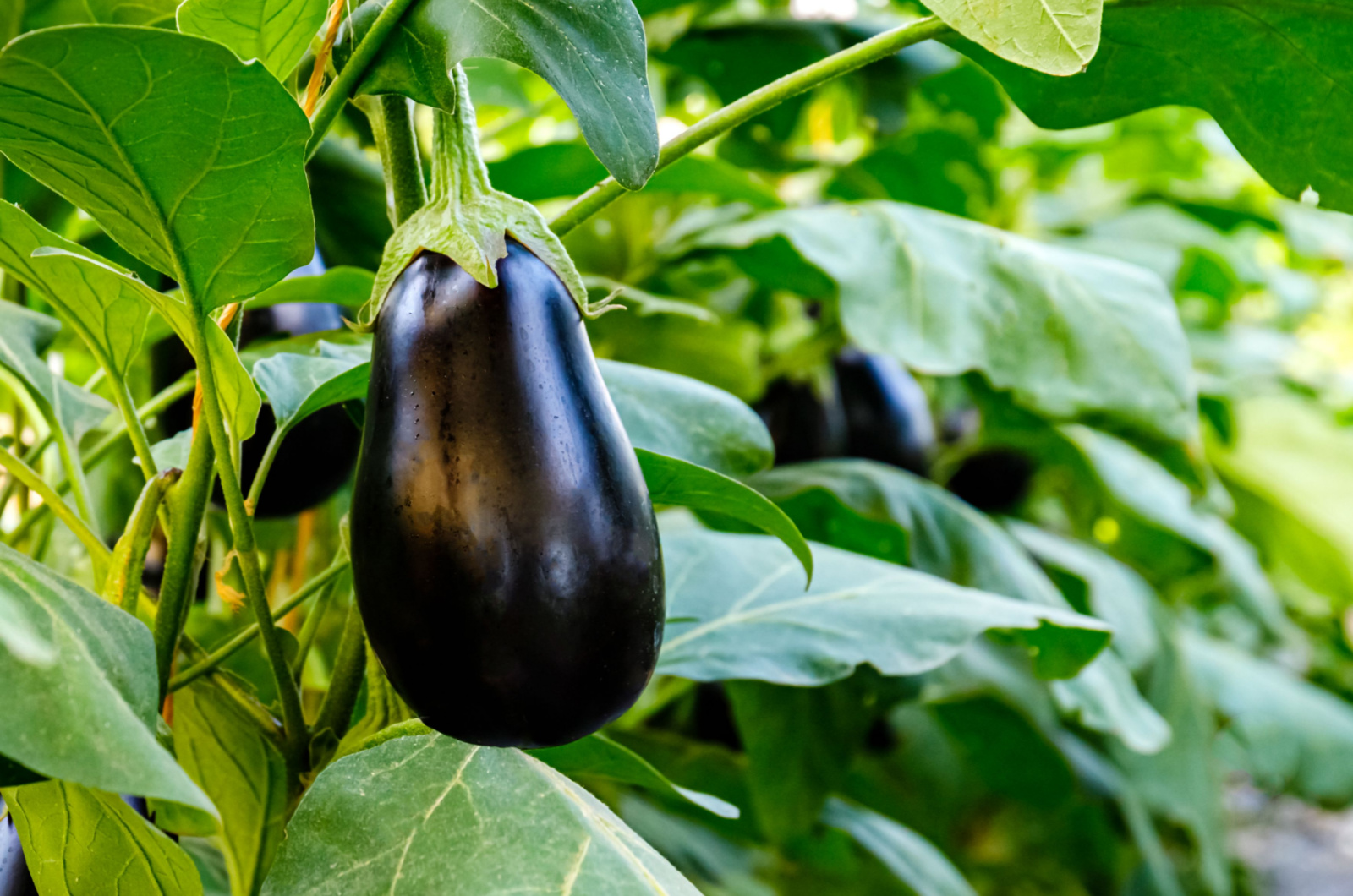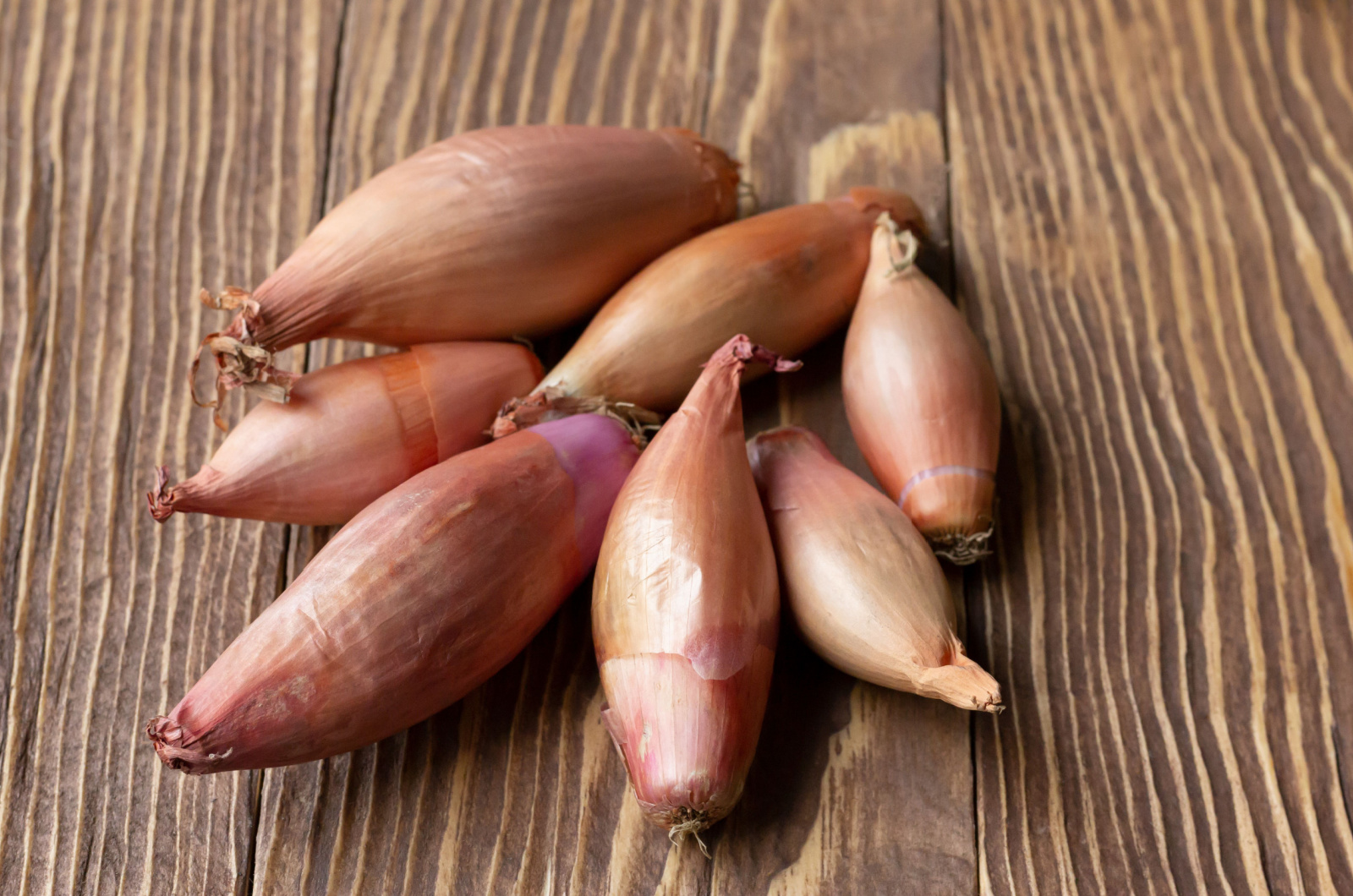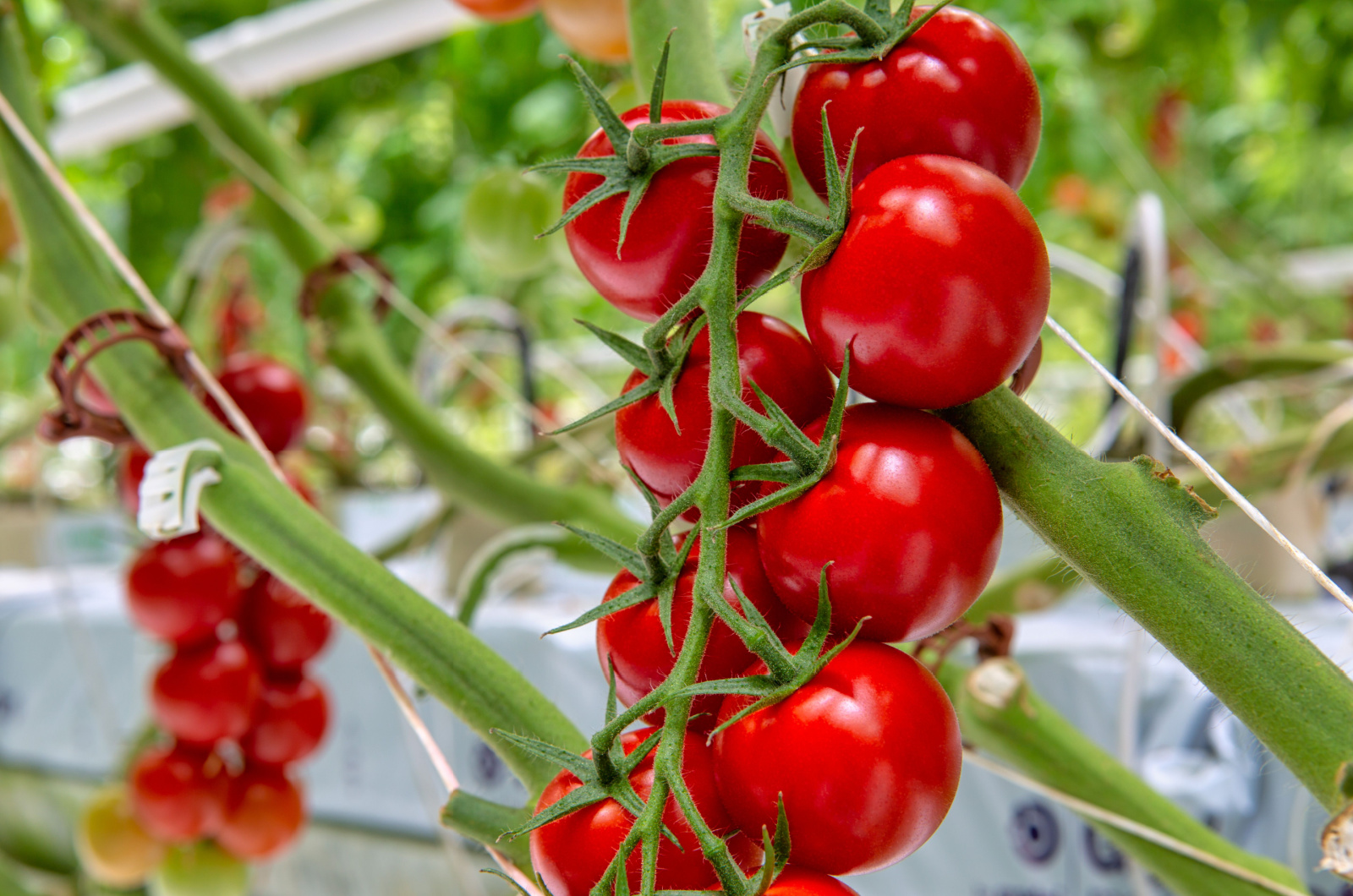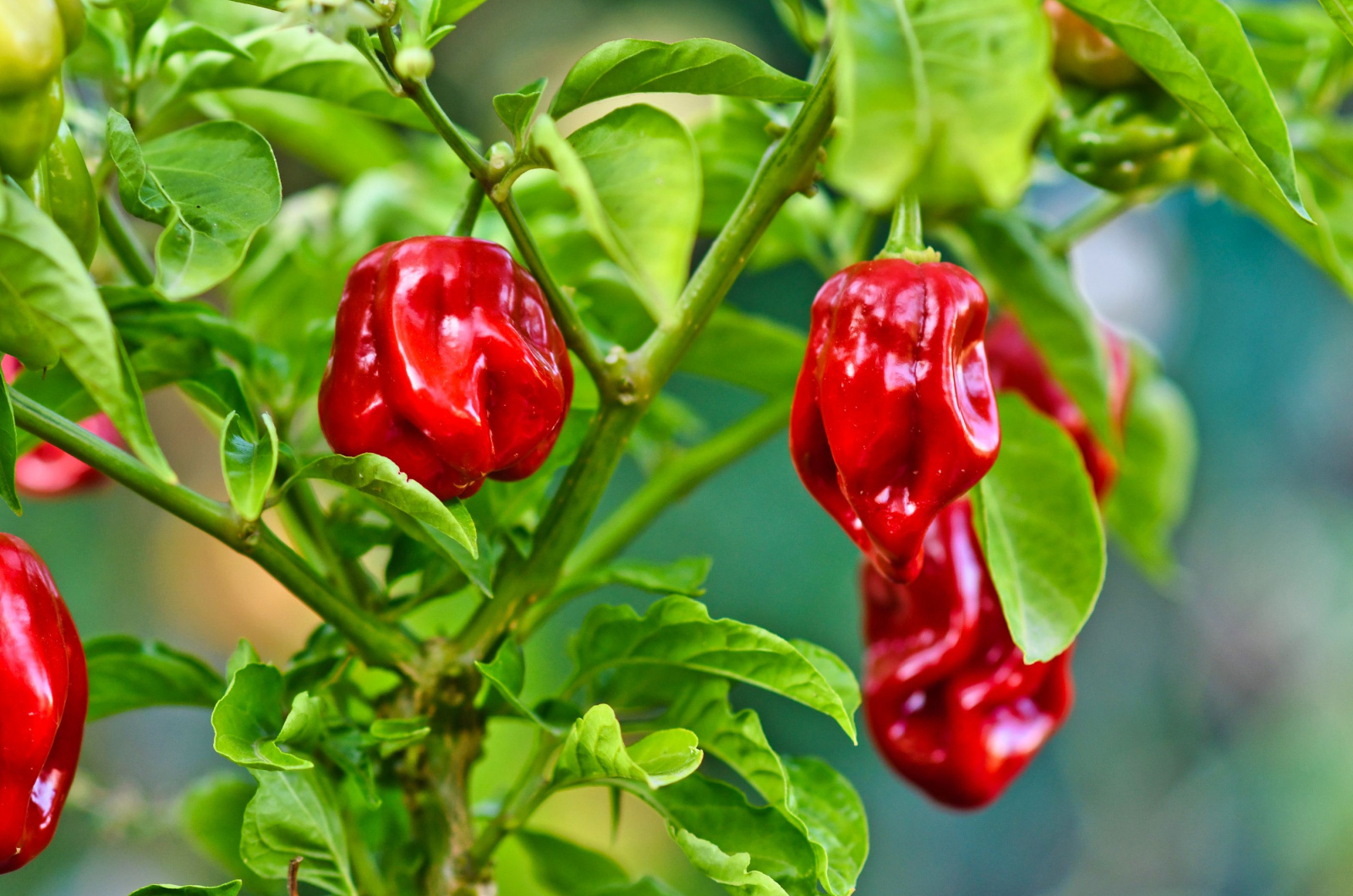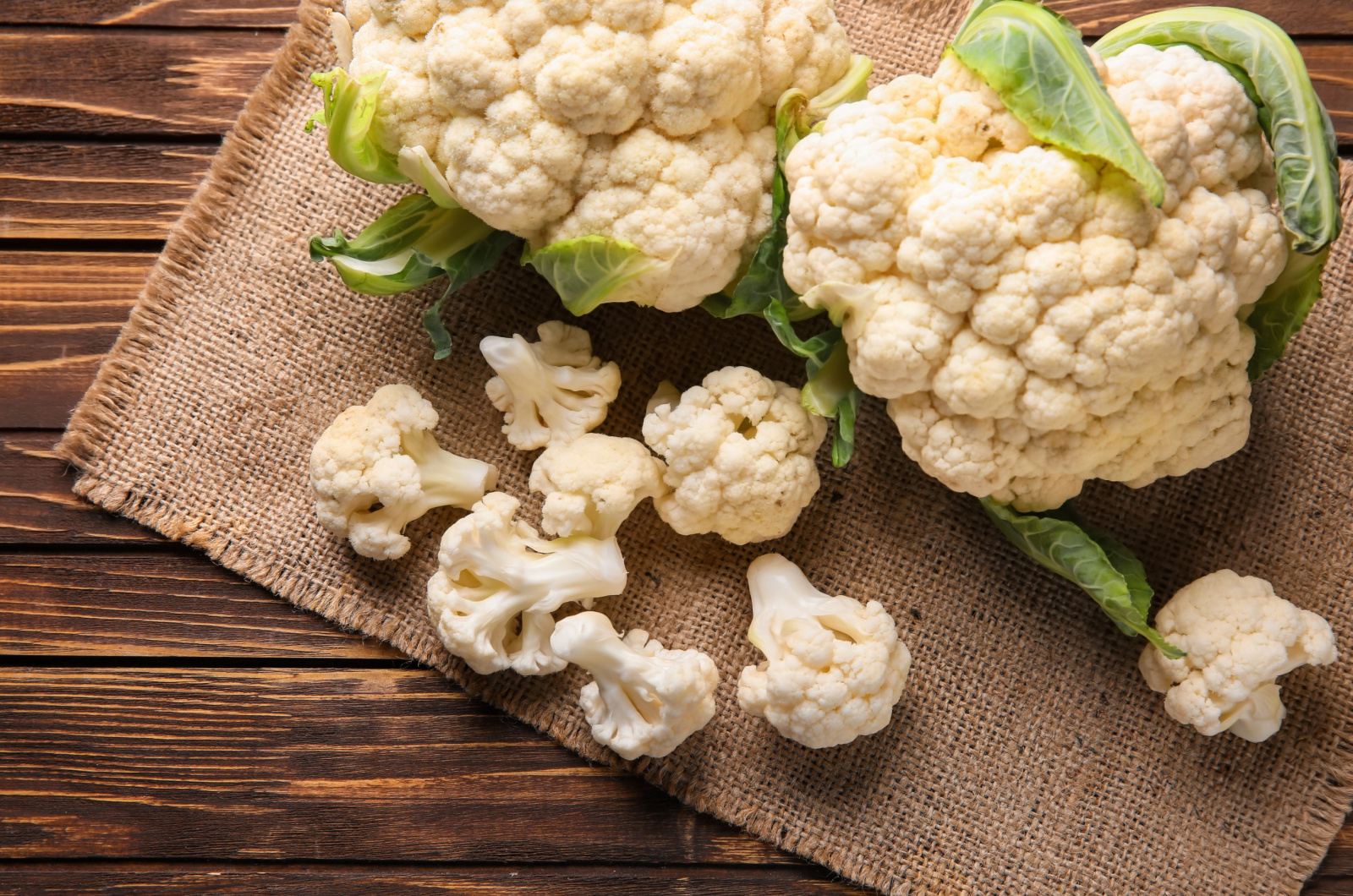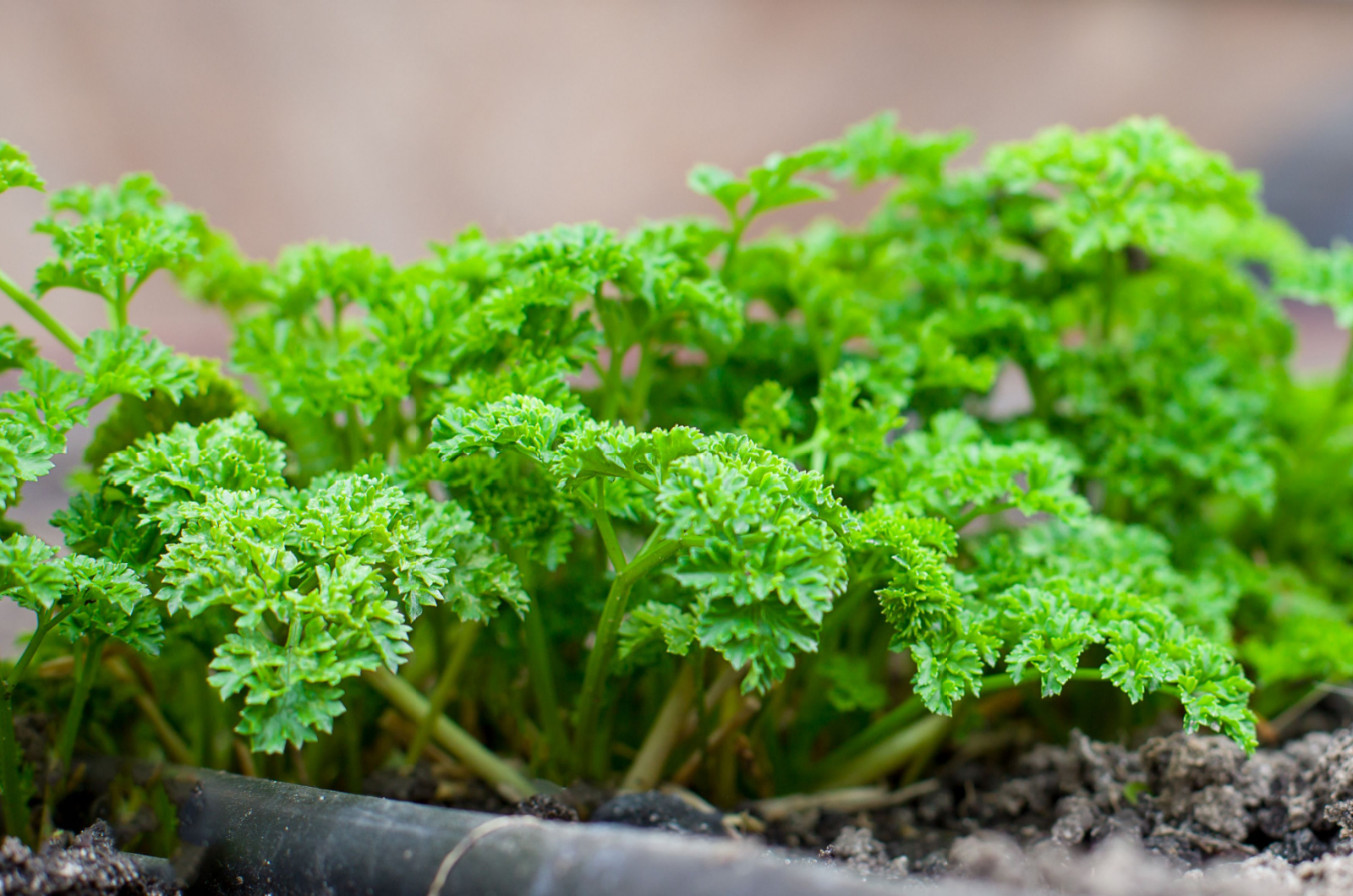New year, new veggies!
January is the ideal time to start your vegetable garden. The temperatures might be freezing, but there are still some great ways to plant your veggies perfectly safely.
Whether you own a greenhouse, invest in a cold frame, or simply start the seeds indoors, there are plenty of vegetables that are ready to be planted just as the holidays come to an end!
Now, let’s start our day number 1 in the planting calendar!
1. Eggplant
Eggplants, with their glossy purple skin and versatile nature, are a delightful addition to any garden. These delicious veggies are an excellent source of vitamin B1, antioxidants, potassium, and folate.
They are warm-season plants that love the sun and can be grown in containers or directly in the soil. Eggplants’ growing stages are easy to track – give them a bit of fertilizer and a lot of moisture to keep them happy and healthy.
Planting eggplants earlier is a great idea. Start eggplant seeds indoors in January, providing them with warmth and light. Early-sown eggplants will do best in a heated greenhouse, but you can keep them elsewhere as long as they are protected from freezing temperatures.
Transplant the seedlings into well-draining, fertile soil once the frost has passed. Space the plants about 24 inches apart and provide support as they grow.
Related: Avoid These 6 Eggplant Growing Mistakes For A Bountiful Harvest
2. Quinoa
Quinoa is the perfect option for all gluten-free gardeners out there!
Quinoa, a nutrient-rich pseudo-grain, is an excellent protein source. It’s also rich in vitamins, minerals, and plenty of antioxidants good for our health.
Sow quinoa seeds directly into the garden or go for pots that you can easily bring outdoors. Make sure that they grow in a sunny location with well-draining soil.
In the beginning, quinoa is a slow grower. Don’t get fooled by that because soon enough, these plants will be over two meters tall!
Keep the soil consistently moist during the growing season. Some of the good quinoa companions include mint, beans, and garlic. You should also support their tall growth with stakes.
Harvest when the seed heads change from green to a deep, golden color – it usually takes about 90-120 days from sowing to harvesting. Popular varieties include ‘Cherry Vanilla’ and ‘Brightest Brilliant Rainbow’.
3. Banana Shallots
Banana shallots, otherwise known as the sweet sister of onions, are elongated veggies with mild flavor and a decorative pink color.
Like other members of the allium family, Banana shallots also offer health benefits. They contain antioxidants and anti-inflammatory compounds, contributing to overall well-being. These veggies are often used in soups, salads, and stews.
Plant banana shallot sets in well-draining soil in January, spacing them about 6 inches apart. They’ll have enough time under glass to develop roots and form flavor.
Ensure they receive adequate sunlight and keep them weed-free. And to give your bananas a boost in the heat, apply a small amount of potash sulfate.
Related: How To Grow Shallots From Sets And Seeds
4. Sweet Potatoes
Sweet potatoes, with their trailing vines and vibrant orange tubers, bring both beauty and nutrition to your garden. Not only are they rich in minerals and fiber, but they also provide a healthy dose of antioxidants necessary for our immune systems!
No matter if you choose softer American varieties or go for red-skinned Caribbean ones, it’s important to start them early. For those living in mild regions, go for cultivars like ‘Bonita’, ‘Erato Orange’, or ‘Georgia Jet’.
In January, start sweet potato slips indoors by placing sweet potato halves in water or moist compost. Transplant the slips into the garden once the soil is warm. Make sure that your sweet potatoes have enough space to spread their vines.
If you’ve successfully grown your sweet potatoes, then you’ll need this: Top Tips For How And When To Harvest Sweet Potatoes
5. Glasshouse Tomatoes
It might sound strange to start tomatoes right after New Year’s Eve, but that’s exactly what we are doing here!
Glasshouse tomatoes, known for their juicy and flavorful fruits, thrive in controlled environments. These indeterminate varieties can be grown in greenhouses or on sunny windowsills. Opt for varieties such as ‘Sweet Million’, ‘Tomande’, and ‘Heinz 1350 Souper Tomato’.
Make sure to start your January tomatoes in well-watered seed compost. Plant in the greenhouse soil after the first flower truss emerges and pot up in big tubs or grow bags, or grow them in hanging baskets.
Provide support for vines and ensure they receive adequate sunlight. Water frequently and fertilize with a little bit of high-potash when the fruits start to ripen. Proper ventilation is also important as the days get warmer.
Related: 8 Simple Strategies To Get More Tomatoes And Boost Your Harvest
6. Collard Greens
Here’s yet another veggie packed with vitamins and nutrients that are super beneficial for our health!
Collard greens produce large, dark green leaves that are a staple in many cuisines. You can add them to smoothies, steam them, or eat them raw!
These are cool-season veggies that can grow in different soil types, as long as they are moist and well-draining. Start growing them indoors and then plant them out once they have set three true leaves.
Keep the soil consistently moist and harvest the outer leaves when they reach a desirable size. You can combine them with celery, dill, or sage. Popular varieties include ‘Flash’ and ‘Teddie’.
7. Habanero Chilies
Spice up the beginning of the new year with some habanero chilies!
Habanero chilies, with their fiery heat and vibrant colors, add zest to your garden and culinary creations. Although these heat-loving plants thrive in warm climates, you can still start them a bit earlier, as long as they are kept in warm and nice conditions.
Start habanero chili seeds indoors in January, as they require a longer growing season. Transplant seedlings into well-draining soil once the danger of frost has passed. Or try growing them in a greenhouse or polytunnel. Provide support for the plants as they grow.
There are many different options to choose from – you can opt for yellow habanero, orange habanero, chocolate habanero, and many more!
If you are someone who likes spicy peppers, make sure to check out this article: Habanero Pepper Scoville Ratings: Starting From The Hottest
8. French Beans
Or are you more into beans than chili peppers?
If so, then French beans are the perfect choice for starting earlier. These fast-growing plants thrive in sunny locations and well-draining soil. There are many varieties to choose from, and there are definitely ones that can be started indoors.
You can go for a dwarf variety or a climbing one. Cultivars best suited for growing indoors are ‘Amethyst’ and ‘Sonesta’, but you can also pick dwarf varieties such as ‘Blue Lake’ or ‘Golden Gate’.
If you grow climbing cultivars, you’ll have to provide them with adequate support. Well-draining soil and large containers are all French beans require for proper growth!
9. White Cauliflower
It’s better to start cauliflowers early so that they have enough time to develop their crunchy, large heads. The best conditions for very early types are long growing seasons that allow for the bulking up of deeply textured florets and large root systems!
Sow them indoors or under glass in cold frames or a greenhouse. They require cool temperatures and fertile, well-draining soil. A lot of light is required during every cauliflower growing stage.
Transplant seedlings into the garden once they are robust. You can grow them alongside broccoli, radishes, or beetroots. Depending on the variety, cauliflower should be ready for harvest after 3 to 4 months.
Popular varieties include ‘Clapton’, ‘Snowball’, and ‘Early Snow’.
Also read: Is Cauliflower Man-Made? A Helpful Guide To This Plant’s Origin
10. Celeriac
Celeriac, also known as celery root, is a unique root vegetable with a flavorful, celery-like taste. This unusual cool-season crop is known for its crispy, yet delicious roots that are often used in culinary dishes.
It takes time to grow celeriac, which is why it is a good idea to start growing it earlier than the rest of the veggies. Sow celeriac in shallow pots filled with moist compost. Protect them from cold temperatures and water frequently. They can also benefit from a layer of mulch.
Opt for varieties such as ‘Mars’, ‘Alabaster’, and ‘Monarch’. Combine your celeriac with companions such as alliums, celery, and Brussels sprouts.
11. Curly Parsley
Curly parsley produces tightly curled, dark green leaves, which is why it is a popular herb in many culinary traditions. This cool-season herb is easy to grow and adds a fresh, aromatic touch to dishes.
Since their seeds might take a while to germinate, start them as early as January. Grow them in a cloche or cold frames, or put them in a greenhouse or sunny windowsill. Well-draining, moist soil, a liquid feed, and plenty of light will keep your parsley thriving!
If you move them outdoors, combine them with parsley companion plants like carrots, onions, asparagus, or chives. ‘Aphrodite’ and ‘Champion Moss Curled’ are some of the best varieties for early growing.
Related: How To Harvest Parsley Without Killing The Plant – 7 Brilliant Tips

